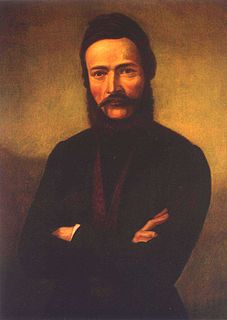
Ľudovít Velislav Štúr, known in his era as Ludevít Štúr, was a Slovak revolutionary politician, and writer. As a leader of the Slovak national revival in the 19th century, and the author of the Slovak language standard, he is lauded as one of the most important figures in Slovak history.
The Slovak language is a West Slavic language. Historically, it forms a dialect continuum with Czech. The written standard is based on the work of Ľudovít Štúr, published in the 1840s and codified in July 1843 in Hlboké.

The Reina–Valera is a Spanish translation of the Bible originally published in 1602 until United Bible Societies in 1909 revised the earlier translation produced in 1569 by Casiodoro de Reina. This translation was known as the "Biblia del Oso" because the illustration on the title page showed a bear trying to reach a container of honeycombs hanging from a tree. Since that date, it has undergone various revisions notably those of 1602, 1862, 1909, 1960, 1977, 1995, and more recently in 2011.
The Christian Community Bible is a translation of the Christian Bible in the English language originally produced in the Philippines.
Jozef Roháček was a Slovak Protestant activist, evangelist and scholar.
Several Spanish translations of the Bible have been made since approximately 700 years ago.

Červený Kláštor is a small village and municipality in the far north Kežmarok District in the Prešov Region of northern Slovakia, near the Polish border, in the Zamagurie region.
German language translations of the Bible have existed since the Middle Ages. The most influential is Luther's translation, which established High German as the literary language throughout Germany by the middle of the seventeenth century and which still continues to be most widely used in the German-speaking world today.
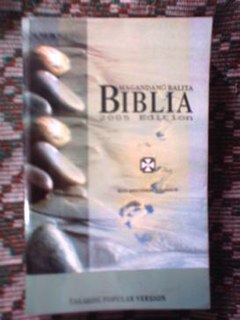
The Magandang Balita Biblia is one of the two most widely circulated translations of the Christian Bible in the Tagalog language [the other entitled Ang Bagong Ang Biblia, a revision of the earlier Ang Biblia ], first published by the Philippine Bible Society in 1973. This translation of the Holy Scriptures in Tagalog follows the tradition of the Good News Bible, an English language translation published by the American Bible Society in 1966.
The Ilocano Bible, published in 1909, is the second Bible to be published in any Philippine language, after the Tagalog which was published in 1905.
The first complete Catalan Bible translation was produced by the Catholic Church, between 1287 and 1290. It was entrusted to Jaume de Montjuich by Alfonso II of Aragon. Remains of this version can be found in Paris.
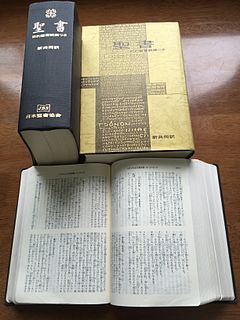
The New Interconfessional Translation Bible is a Japanese translation of the Christian Bible, completed in 1987, and is currently the most widely used Japanese Bible, by both Catholics and Protestants.
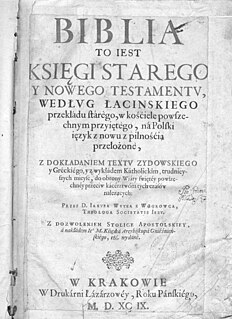
The Jakub Wujek Bible was the main Polish Bible translation used in the liturgy of the Roman Catholic Church in Poland from the late 16th century till the mid-20th century.

Although the biblical themes have been an essential formative substance of the Portuguese culture, composition in that language of a complete translation of the Bible is quite late when compared with other European languages. The beginnings of the written transmission of the sacred text in Portuguese, parallel to its traditional liturgical use in Latin, are related to the progressive social acceptance of the vernacular as a language of culture in the low-medieval period. And even though the official language of the Portuguese monarchy dates back to the end of the thirteenth century, during the reign of D. Dinis, the writer Carolina Michaëlis de Vasconcelos (1851-1925), for example, was able to state categorically that, in the medieval period, "Portuguese literature, in matters of biblical translations, is a poverty Desperate "- a judgment that remains valid, experts say.

A Protestant Bible is a Christian Bible whose translation or revision was produced by Protestants. Such Bibles comprise 39 books of the Old Testament and 27 books of the New Testament for a total of 66 books. Some Protestants use Bibles which also include 14 additional books in a section known as the Apocrypha bringing the total to 80 books. This is often contrasted with the 73 books of the Catholic Bible, which includes seven deuterocanonical books as a part of the Old Testament. The division between protocanonical and deuterocanonical books is not accepted by all Protestants who simply view books as being canonical or not and therefore classify books found in the deuterocanon, along with other books, as part of the Apocrypha.
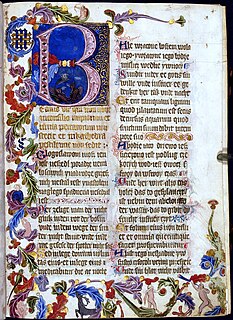
The earliest Bible translations into Polish date to the 13th century. The first full ones were completed in the 16th.

The Bible has been translated into multiple Philippine languages, including Filipino language, based on the Tagalog, the national language of the Philippines.
The history of all Bible translations into Slavic languages begins with Bible translations into Church Slavonic. Other languages include:
Camaldolese Bible is the first known complete translation of Bible into Slovak language. The Bible was translated from Vulgate by Camaldolese monks at Červený Kláštor monastery. The completed translation had been rewritten in 1756–1759. The translation is characterized by the effort to use forms and expressions of common Slovak spoken language, with distinctive Western-Slovak elements and some literary linguistic elements of Czech origin.

Camaldolese Slovak is a variant of cultural Slovak language and can be called first attempt at creating standardized Slovak language. It is named after order of Camaldolese, which are credited as creators of at least two known books in this language:











